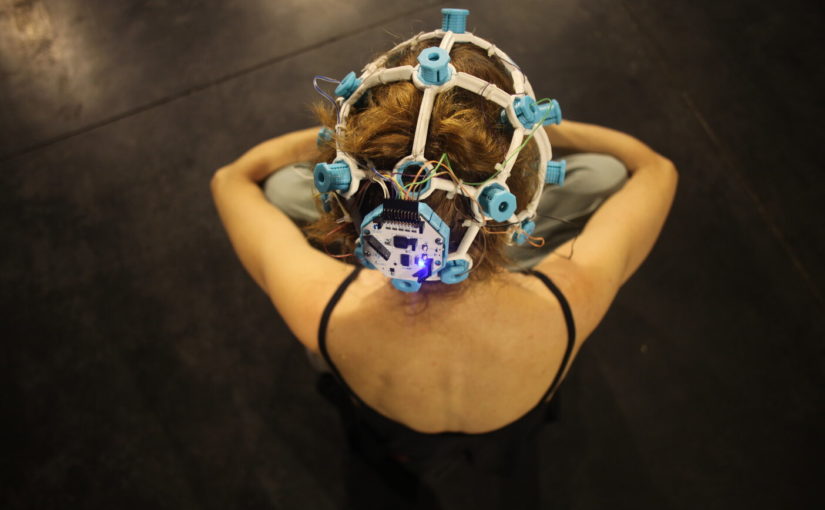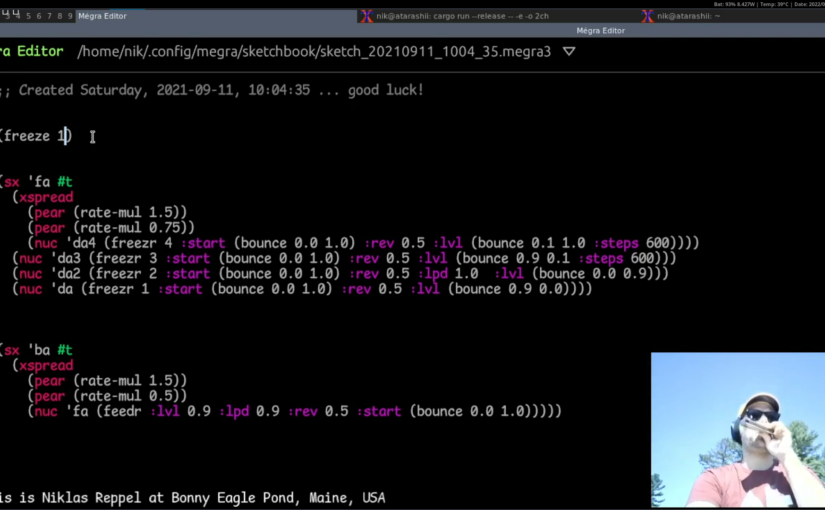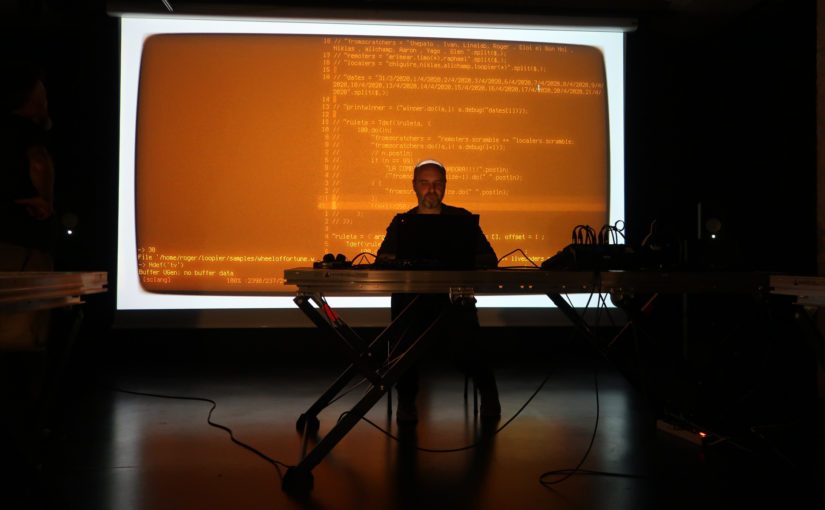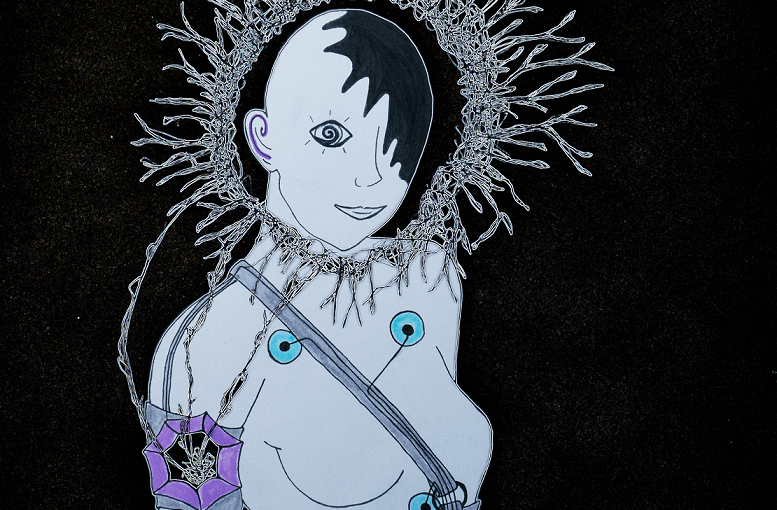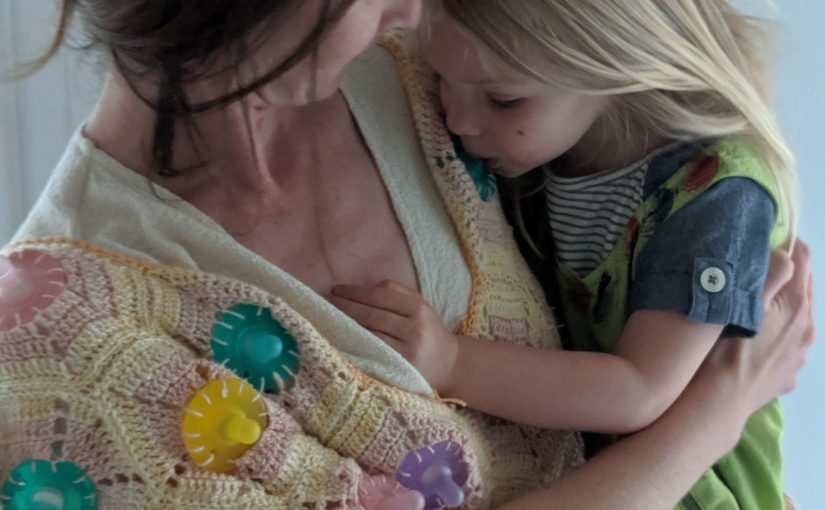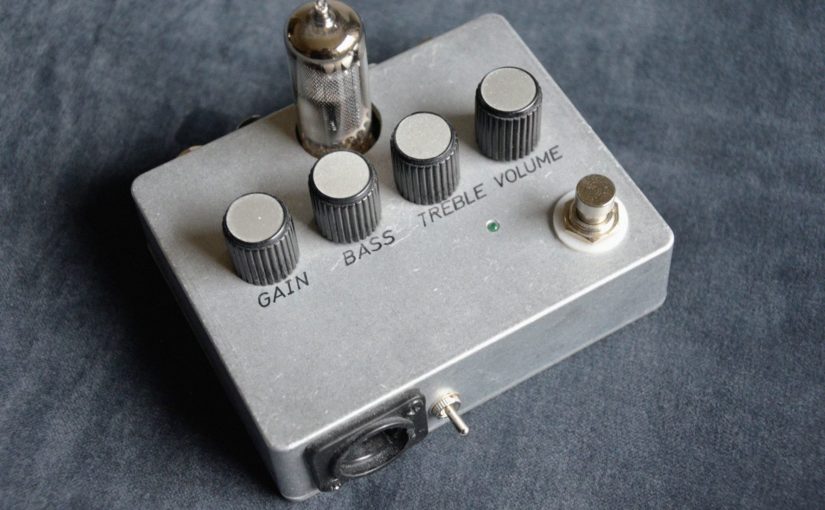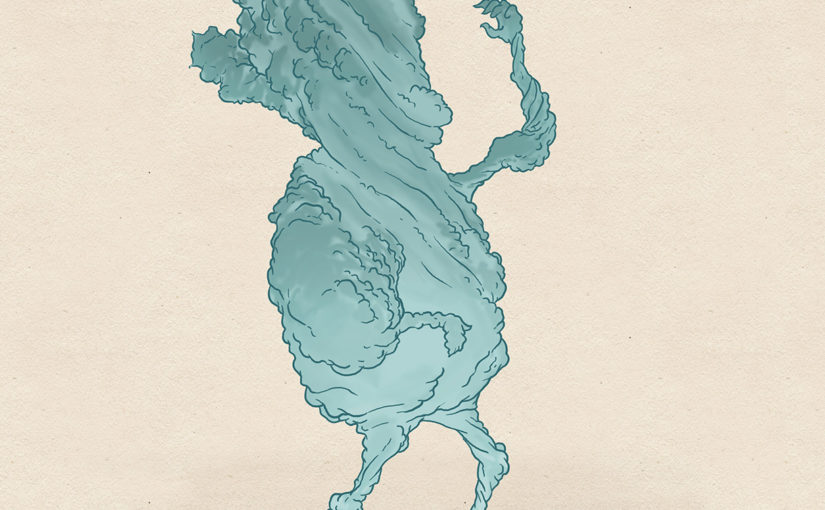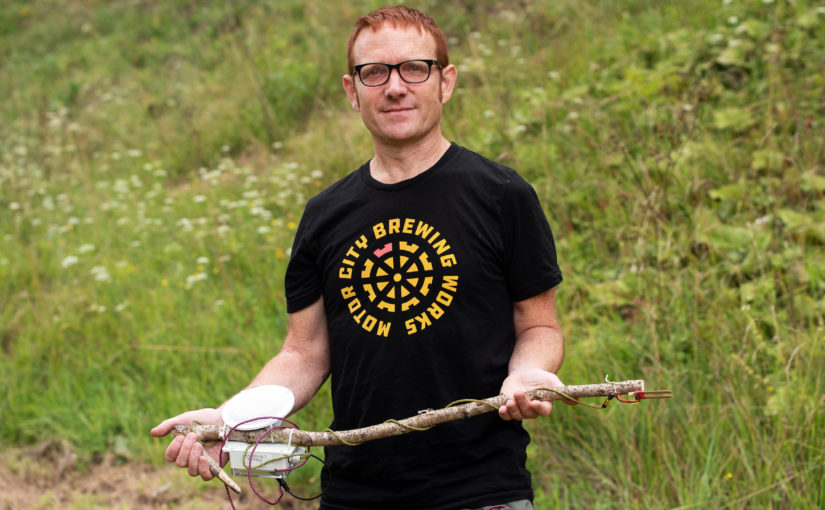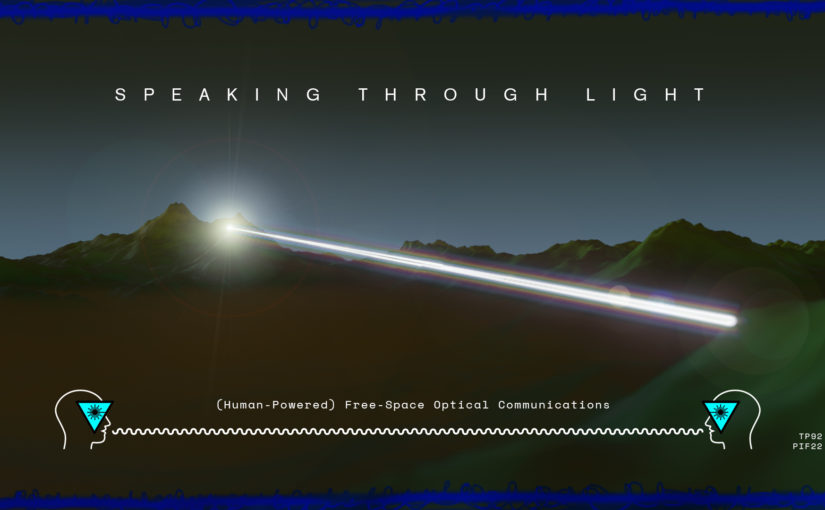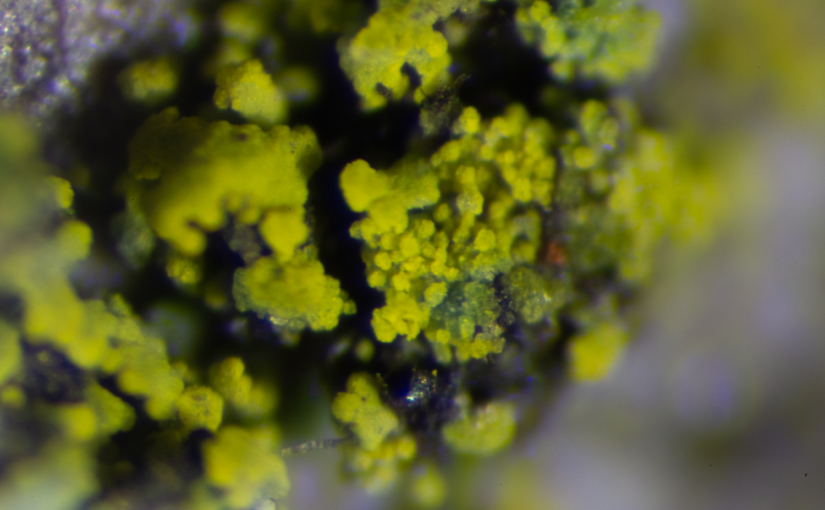Alicia Champlin is working on a hybrid digital-acoustic instrument using a handmade OpenBCI EEG headset along with her own MaxMSP live/realtime data sonification application for EEG data, as a partial input to a modified bow chime (somewhat styled after the Robert Rutman projects). The outcome is drone music from mechanically amplified bowed cymbals in a live feedback loop with brainwaves and the player. The bow chime amplifies both the brain synth and the player’s physical interactions, sounding out the intersection between the resonant frequencies of the brain and those of the instrument itself.
You can listen to a performance with the prototype here:
Starting with a host of existing MaxMSP patches which Alicia built for a previous sound project, she will be reviving and reworking the synth components to optimize/tune the output for best effect with the bow chime, and at the same time will be exploring whether she can replicate these synths with Pure Data in order to free the product from MaxMSP and create a truly open-source version.
Anyone interested in how the brain can be expressed in sound, those who know and use PD, and other brain synth makers are more than welcome to join Alicia on her quest and on the stage!
